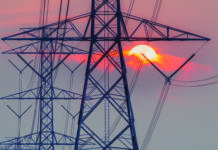Energy NIMBYs – objectors to green power projects close to homes and rural resources – may be far less numerous than developers fear and politicians pander to, a new survey of Britons’ attitudes towards renewable power indicates.
Britain’s population is dogged by confusion, disagreement and comparative ignorance about renewable energy sources, new analysis finds in answers given by 2,000 UK billpayers to communications strategists Copper Consultancy.
Even agreeing which sources can legitimately be classed as renewable poses problems for the average billpayer, according to Copper’s analysis.
Less than half – or 49% – of the 2,000 billpayers polled by the firm this spring regard onshore turbines as a true source of renewable electricity. This low share may – in the analysts’ verdict – “possibly point to confusion around schemes that haven’t always had political and public support”.
Though the Cameron government’s 2015 nimby-inspired ban on new onshore wind farms in England was nominally lifted by a successor administration four years later, subsequent continuing failures by governments under Johnson, Truss & now Sunak to arm planning officials with new guidance has in effect continued the Conservatives’ blocking of new turbine parks on English soil.
Nuclear fares worse in Britons’ perception, with only 16% regarding reactors like Hinkley C & Sizewell B as renewables sources. Less than a quarter of Britons – or 23% – realise that hydrogen can be a renewable source.
The study confirms solar PV and wind turbines, the latter either on land or sea, as the nation’s most immediately recognised sources of clean electricity. All three are named by two-thirds of over 55s but, in the cases of wind’s two possible locations, by less than 40% of respondents in their early 20s.
Anomalies abound in the public’s attitudes. Just over 10% of the young middle-aged, classified as aged between 35 to 44 years, apparently regard coal and gas as “renewable”.
Public awareness of the true share of how much of Britain’s electricity stems from proven low-carbon roots is consequently fuzzy and wide of the mark. Only 6% of respondents were close to identifying correctly the confirmed 41% share which green sources achieved in UK power generation last year.
Overall, upwards of 53% of Britons believe wrongly that renewable generation’s share is 40% or less. A further 20% don’t feel confident even to guess green sources’ share.
A picture is painted, says Copper’s analysts, of Britain’s public believing green electricity is still in its infancy.
“It’s surprising just how low UK public awareness and understanding of renewable energy is”, said Caroline Romback, Copper’s director of construction.
Only 24% of billpayers polled described themselves as confident in knowing how much of their power came from renewables. That’s not to say respondents don’t care; 53% said they were interested in understanding where their energy comes from.
Copper’s findings destroy an abiding myth that younger people care more about renewables the old. The reverse is true, the report concludes.
For both offshore & onshore wind, for example, only 50% of respondents younger than 34 years old declared support, compared to around 60% support among 35 to 44 year olds, and around 70% of the over-50s voicing their enthusiasm.
Such findings will strengthen a common view among wind developers, that objections to new onshore turbines often are unrepresentative of true local opinion, and are instead merely obstructive & prejudiced.
To the question of which generation technologies would contribute most to Britain’s quest for Net Zero by 2050, solar PV and offshore wind came out top, each commanding around one-third of votes. Onshore wind followed closely, with nearly a quarter of votes.
“With nuclear, “ Copper reports, ”we saw a clear escalation in support, the older that a respondent was. Only 8% of our youngest respondents see nuclear as a Net Zero contributor, compared to 21% of our 55 and older respondents. Again, we saw a gender split for nuclear support, with more support for nuclear from male respondents (21%) than from female ones (9%).
Nimbys appear to inspire more fear and more negative influence on politicians & planners than their comparatively meagre numbers appear to justify, the report implies.
On the contrary, older people emerge from the study as predominantly committed to new generation sources, particularly in relation to local generation schemes offering at least some identifiable control by their community.
Read Copper Consultancy’s report for free here.
INTEREST DECLARED: The present writer invests in four volunteer-run local energy co-operatives.




